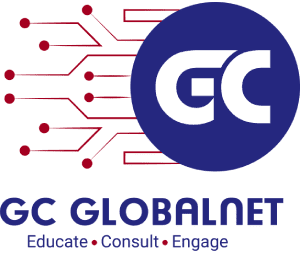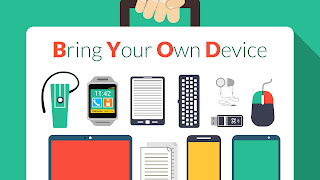Twitter Feed
International Public Sector Cloud Computing Summit in DC
Next week at the Hyatt Regency in reston, Virginia, the Cloud Standards Customer Council will be holding it’s Public Sector Cloud Summit. This two day cloud event will feature international public sector Cloud…
Jill T. Singer, NRO CIO, Named One of 10 Top Women in Cloud Computing !!
CONGRATULATIONS to National Reconnaissance Office (NRO) CIO Jill T. Singer for being selected as one of the 10 winners of the first annual CloudNOW awards presented at the Cloud Connect Conference in…
NJVC® and Virtual Global Announce Release of PaaS White Paper: Paper Clarifies the Confusion Surrounding PaaS for Federal IT Buyers—Why It Is Important and How It Can Cut Development Costs by 50 Percent
VIENNA, Va., Jan. 23, 2012 —NJVC®, one of the largest information technology solutions providers supporting the U.S. Department of Defense, and Virtual Global, a premier provider of software and cloud…
December 2011: GovCloud Moves From Policy to Law
Over the past years, government cloud computing has steadily moved forward from it’s early beginnings as an interesting curiosity: December 23, 2008 – Now really. Should the Obama administration use…
GovCloud.com !! The New Hub for Government Cloud Computing
It gives me great pleasure to announce the relaunch of GovCloud.com! GovCloud is the “go to” place for everything related to federal cloud computing. Our mission is to help federal…
Backupify Names Top 10 Cloud Computing Experts to Follow on Twitter
THANK YOU BACKUPIFY!!!! Thank you for the honor of being on your Top 10 List! Backupify is the leading backup provider for cloud based data, offering an all-in-one archiving, search…
NJVC® Cloud Computing Expert Kevin Jackson to Speak at NIST Cloud Computing Forum & Workshop IV on Nov. 3 in Gaithersburg, Md.
VIENNA, Va., Oct. 28, 2011 — NJVC®, one of the largest information technology solutions providers supporting the U.S. Department of Defense (DoD) , is pleased to announce that Kevin Jackson,…
NJVC® General Manager, Cloud Services, Kevin Jackson to Moderate “Cloud Computing and the Intelligence Mission” Panel at GEOINT 2011 Symposium
Vienna, Va., Oct. 13, 2011 — NJVC® , one of the largest information technology (IT) solutions providers supporting the U.S. Department of Defense, is pleased to announce that Kevin Jackson,…
NJVC® Spotlights Cyber Security and Automated IT at Gartner Symposium/ITxpo® 2011
VIENNA, Va., Oct. 4, 2011 — NJVC®, one of the largest information technology solutions providers supporting the Department of Defense, announces its lineup for the Gartner Symposium/ITxpo®, Oct. 16 –…
NJVC® to Demonstrate Enterprise Automation at GEOINT 2011
VIENNA, Va., Oct. 6, 2011 — NJVC®, one of the largest information technology solutions (IT) providers supporting the U.S. Department of Defense (DoD), is pleased to offer live, compelling demonstrations…
- Increased employee mobility (63%), satisfaction (56%) and productivity (55%) dominate as the top drivers of BYOD. These employee related drivers are considered more important than reduced costs (47%).
- Security (39%) and employee privacy (12%) are the biggest inhibitors of BYOD adoption.
- 20% of surveyed organizations have suffered a mobile security breach, primarily driven by malware and malicious WiFi.
- Security threats to BYOD impose heavy burdens on organizations’ IT resources (35%) and help desk workloads (27%).
- Despite increasing mobile security threats, data breaches and new regulations, only 30% of organizations are increasing security budgets for BYOD in the next 12 months and 37% have no plans to change their security budgets.
- 72% – Data leakage/loss
- 56% – Unauthorized access to company data and systems
- 54% – Downloading of unsafe apps or content
- 52% – Malware
- 50% – Lost or stolen devices
- 49% – Vulnerability exploitation
- 48% – Lack of control on endpoint security
- 39% – Infrequent software updates
- 38% – Compliance
1. Create your policy before procuring technology: To effectively use mobile device management (MDM) technology for employee owned devices Policy must precede technology. Also note that these policies will have broad corporate-wide implications for IT, HR, legal, and security.
- Mobile device management
- Application security assessments
- Application testing services
- Application source code security assessments; and
- Embedded device security.
This post was brought to you by IBM Global Technology Services. For more content like this, visit ITBizAdvisor.com.
( Thank you. If you enjoyed this article, get free updates by email or RSS – © Copyright Kevin L. Jackson 2017)
Cloud Computing
- CPUcoin Expands CPU/GPU Power Sharing with Cudo Ventures Enterprise Network Partnership
- CPUcoin Expands CPU/GPU Power Sharing with Cudo Ventures Enterprise Network Partnership
- Route1 Announces Q2 2019 Financial Results
- CPUcoin Expands CPU/GPU Power Sharing with Cudo Ventures Enterprise Network Partnership
- ChannelAdvisor to Present at the D.A. Davidson 18th Annual Technology Conference
Cybersecurity
- Route1 Announces Q2 2019 Financial Results
- FIRST US BANCSHARES, INC. DECLARES CASH DIVIDEND
- Business Continuity Management Planning Solution Market is Expected to Grow ~ US$ 1.6 Bn by the end of 2029 - PMR
- Atos delivers Quantum-Learning-as-a-Service to Xofia to enable artificial intelligence solutions
- New Ares IoT Botnet discovered on Android OS based Set-Top Boxes


